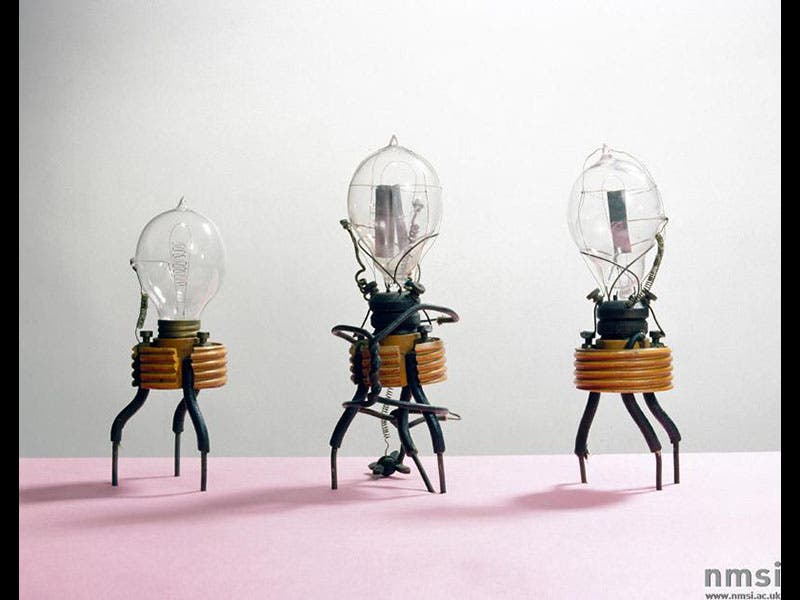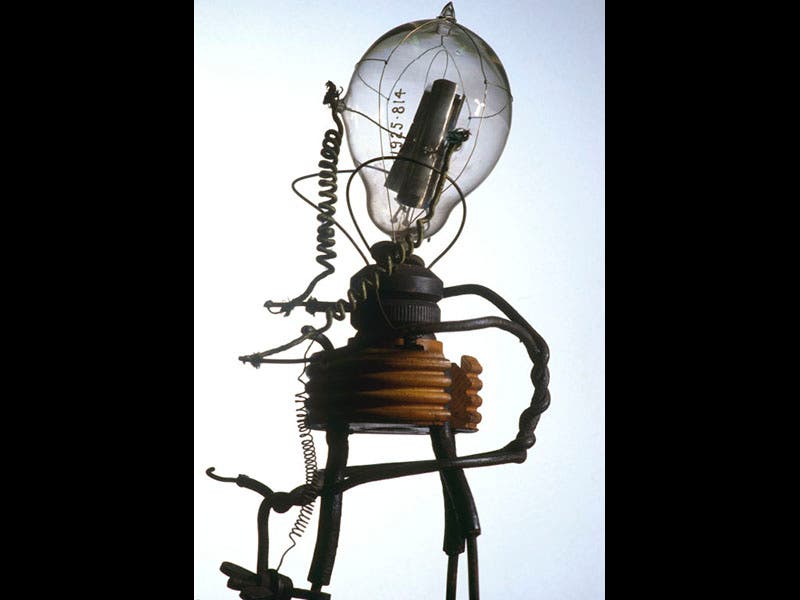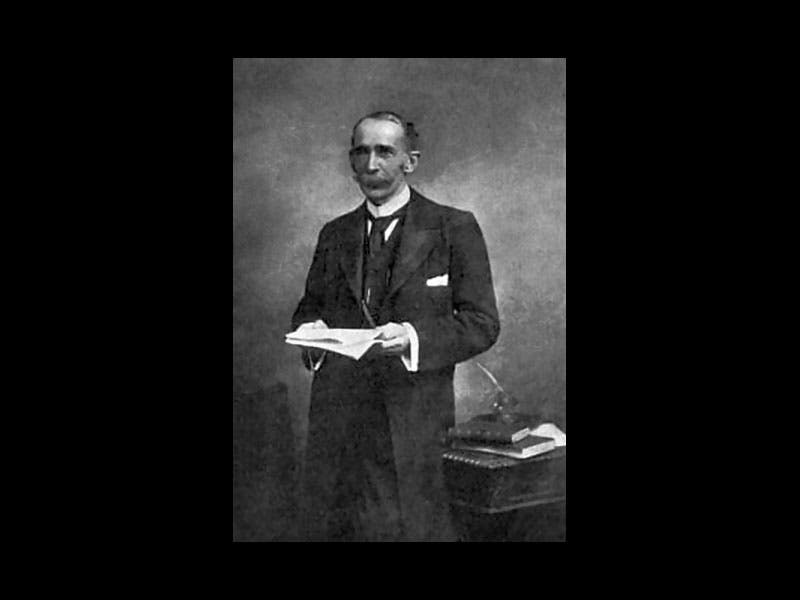Scientist of the Day - John Ambrose Fleming
John Ambrose Fleming, a British electrical engineer, died Apr. 18, 1945, at the grand old age of 95. In 1904, Fleming invented the device that ushered in both the age of electronics and the age of radio. He called his invention a “thermionic valve.” He started with an Edison-Swan incandescent bulb, and he surrounded the tungsten filament with a cylindrical metal plate, insulated from the filament. He found that electrons could flow from the filament to the plate, even in a vacuum, but they would not flow the other way. So if you installed the tube in a circuit that contained an alternating current, it would allow the current to flow in one direction but not the other. In a word, the current was "rectified" and now suitable for all sort of purposes, such as operating a telephone. We now call such a device a diode. The triode, which has a third control plate and can serve as an amplifier, followed soon after, invented by the American Lee de Forest in 1906. The photo of Fleming above (third image) was taken the year de Forest invented the triode.
Fleming obtained a patent for the diode, but it was later withdrawn, as it was concluded that not a single element of Fleming's thermionic valve was new. In a way, that is the highest compliment one can pay an inventor, that he or she took elements that were available to everyone and created something entirely unexpected out of them.
A number of Fleming's original valves can be viewed in the Science Museum in London (first and second images). On the centennial of his invention, in 2004, a blue plaque for Fleming was unveiled (fourth image). Unfortunately, it was decided to attach it to the wall of the Norman Lockyer Observatory in Sidmouth in Devon, in the town where Fleming retired; in the photo above of the observatory (fifth image), you can barely see the plaque, to the right of the main entrance. Since Fleming taught for many years at University College London and was its first professor of electrical engineering, it is odd that his plaque was not installed there, at a location where people might actually see it.
Dr. William B. Ashworth, Jr., Consultant for the History of Science, Linda Hall Library and Associate Professor, Department of History, University of Missouri-Kansas City. Comments or corrections are welcome; please direct to ashworthw@umkc.edu.











